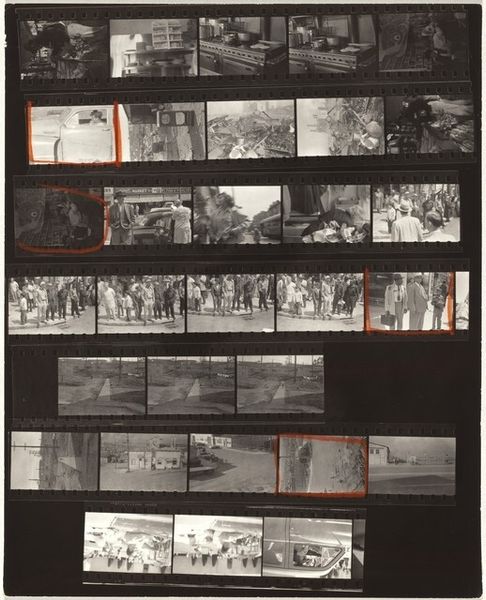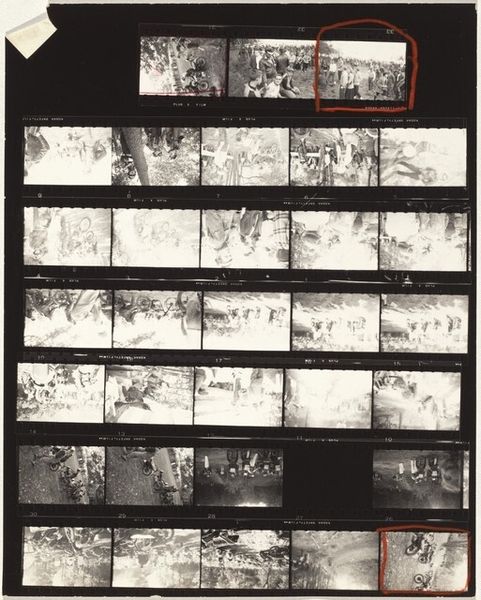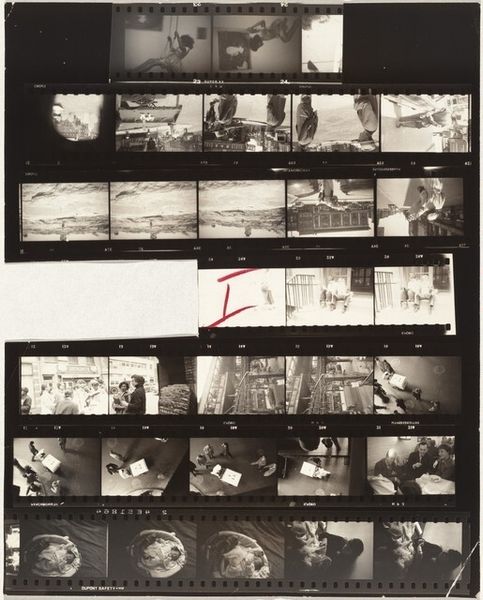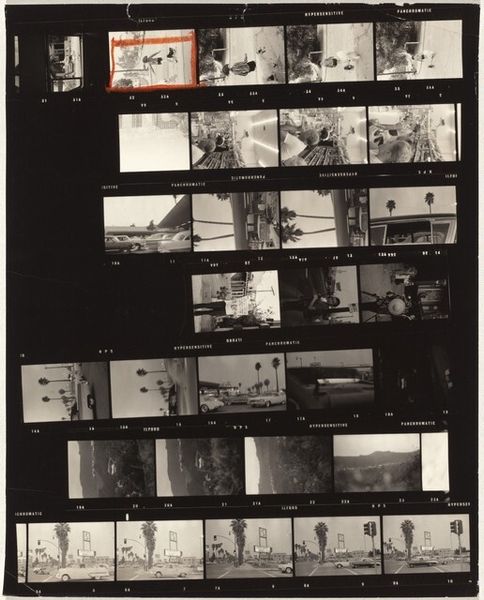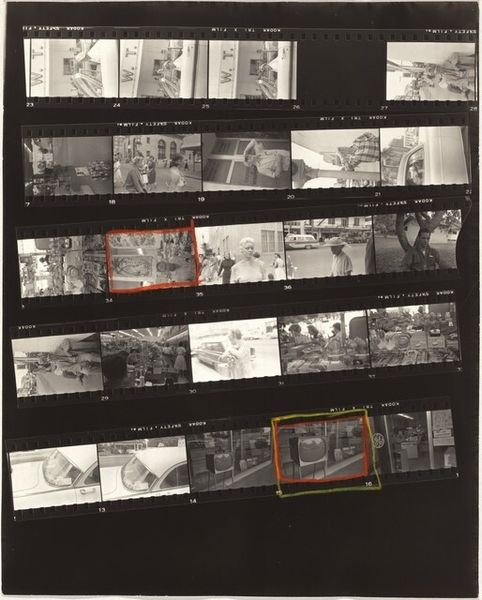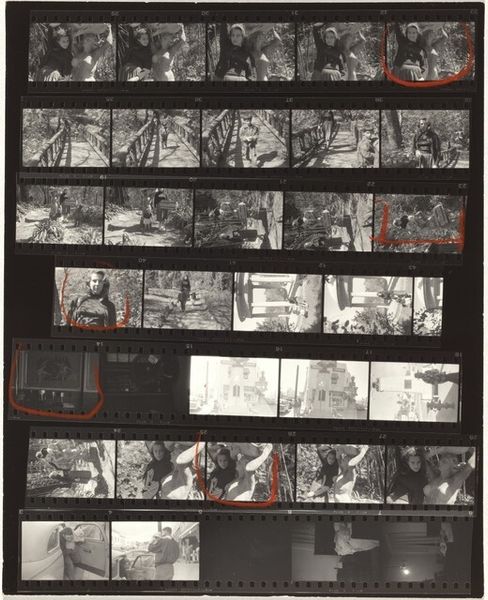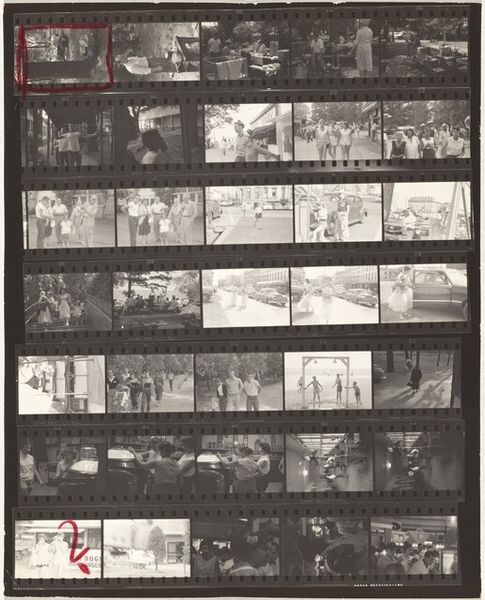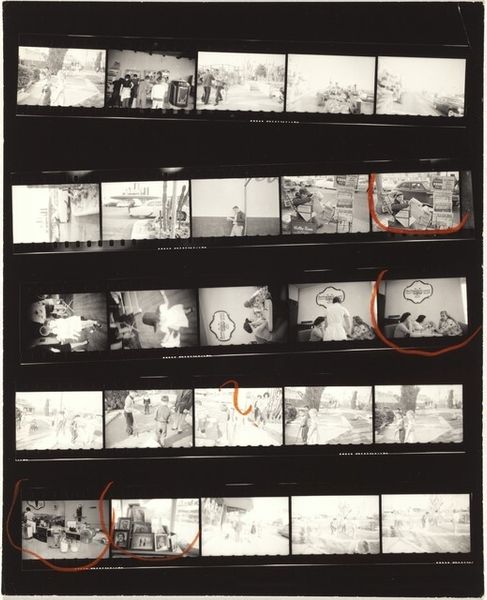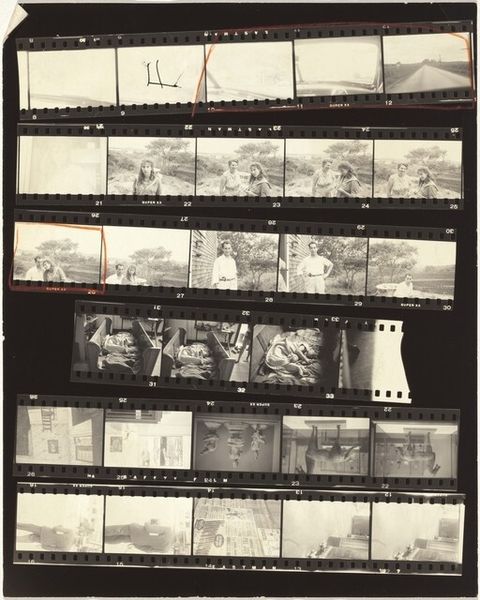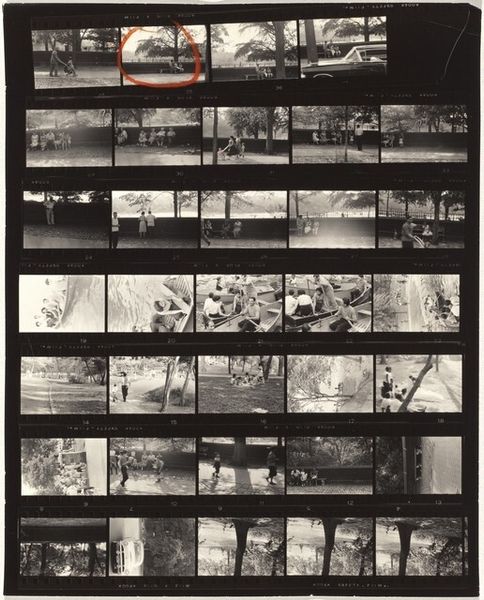
Dimensions: overall: 25.2 x 20.2 cm (9 15/16 x 7 15/16 in.)
Copyright: National Gallery of Art: CC0 1.0
Curator: Robert Frank’s “Guggenheim 704--Rodeo, Casper, Wyoming,” created in 1956, gives us a look at American life through Frank's distinctive lens. Editor: My first impression is how unpolished it feels, like raw documentary footage. The way it showcases the film strip, the photographer's markings—it's very immediate and almost anti-art in its presentation. Curator: Exactly. Frank wasn't interested in idealizing American culture; he was interrogating it. The images—especially presented this way as a strip—reveal the construction of a national narrative and the mythologies we tell ourselves about American identity, in this case focusing on the iconic imagery of the rodeo and the American West. Editor: There’s something about the sequential nature of the images too. The rhythm and variation as our eyes jump to the film grain in this gelatin silver print allows to play the film forward, making the invisible actions of the riders in focus present. What kind of visual tempo do you believe that creates? Curator: I would consider this visual tempo not purely esthetical in nature, and relate this work to other bodies of work such as "The Americans". Frank's images are never simply about aesthetics; he often confronted issues of race, class, and power in postwar America. This contact sheet is an active reminder of the social function images inhabit by depicting how such work may create discourse. The cowboy motif, of course, reinforces that idea of the isolated, independent individual, set against the backdrop of community and spectacle of modern entertainment. Editor: Interesting perspective. I also can't help but fixate on the stark tonal contrasts, from dense blacks to shimmering highlights, and the flat perspectives within this picture. Frank creates these formal strategies which make us focus on what's included in the frame and not. Curator: Agreed. Viewing it through this formalist lens can still lead back into broader themes of control and perspective, after all. That stark contrast and shallow depth draw attention to specific moments but also, deliberately exclude what may lie around that. In so doing he makes these elements active signs within the greater social frame, asking audiences how history may be perceived or altered, and to whose benefit? Editor: Seeing it through those social constructs changes my initial assessment of anti-art… Maybe there are a whole series of intentional choices—and challenges to power structures—inherent within such creative decisions after all. Curator: Right, by bringing those different critical voices to bear, we have opened it to questions concerning not just of skill or of esthetics, but to broader discourses on cultural representation.
Comments
No comments
Be the first to comment and join the conversation on the ultimate creative platform.
